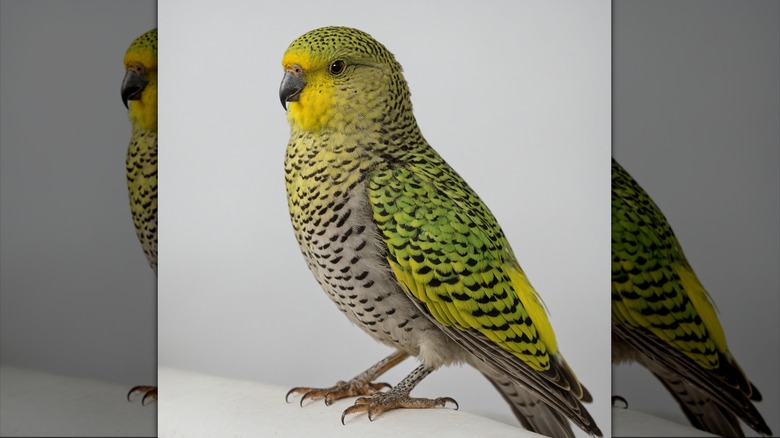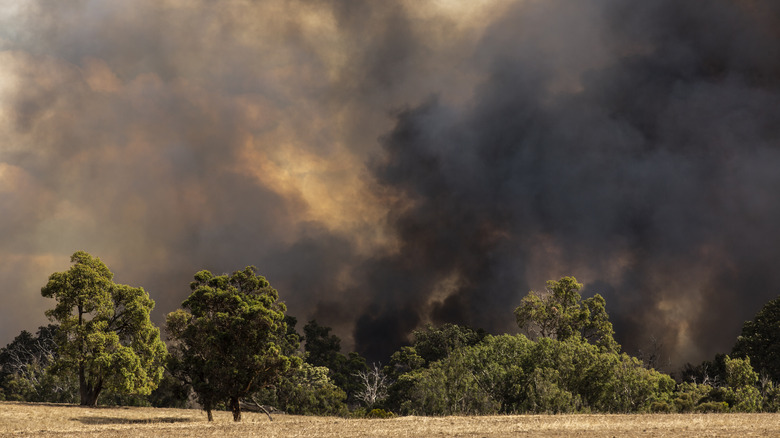How Scientists Rediscovered This Rare And Elusive Bird That We Thought Was Extinct For 100 Years
The night parrot is a beautiful green and yellow bird native to Australia. These birds are nocturnal, nesting on the ground and favoring desert environments. The night parrot is extremely lightweight and small, and it hides during the day in foliage. It is known by its scientific name Pezoporus occidentalis, and by its Manyjilyjarra — an Aboriginal language – name, ngarrijirri.
The bird has been thought to be extinct for the last 100 years. No one has seen it. Though this bird is known to be difficult to spot and prone to hiding, with so many decades passing without a sighting, it was thought the night parrot might be gone forever. However, new research has proven that this special species of native Australian wildlife is still alive. This is also not the only recent resurgence of a nearly extinct rare bird, as one in Britain has made a comeback.
A team of seven researchers set out to see if the night parrot truly was extinct from a specific region in Western Australia. Across a three-year timespan, the research team employed audio, video, and other analytical strategies to discover if the bird was still alive. They were able to successfully find the species still living in the area. The findings were published in the Wildlife Research titled "Potential threats and habitat of the night parrot on the Ngururrpa Indigenous Protected Area." Though this is a find to celebrate, there are still major threats to the night parrot's future.
The rediscovery of the elusive night parrot
The research team spent a few years surveying 31 sites in the Ngururrpa Indigenous Protected Area (IPA). The Ngururrpa IPA is in Western Australia in the Great Sandy Desert. Spanning over 29,000 square miles, it is a harsh but beautiful landscape. People have been living in this region for the last 12,000 years alongside animals, like the marsupial mole, the great desert skink, and the night parrot. For visitors who are less acclimated to dry climates, the newly invented device that can pull drinking water from the air may be your friend. It has been proven to work even in deserts.
Across these 31 desert sites, the researchers used a specific type of acoustic recorder to see if the night parrots were living there. At promising locations, they set up camera traps. They also went to collect scat samples from local predators and analyzed the samples for potential night parrot victims. Finally, the research team went through 40 years' worth of satellite images of the area.
It was an exciting moment to determine that out of the 31 sites analyzed, 17 of them had night parrots, with 10 roosting areas present. The furthest north-to-south sites found were 99 miles apart, and the furthest east to west sites found were 55 miles apart. Not only are the night parrots still in existence, but they are also fairly widespread.
Future protection for the night parrot
Based on all this data, the research team determined that at least 50 night parrots were living in the region, perhaps more. Though that number seems small, it is still the largest population of this bird confirmed in existence. Now, the research team and Australia as a whole look to how the species can be protected so that it does not go extinct.
The research determined that fire was the biggest threat to the night parrots. The area is prone to wildfires, which can destroy the spinifex, the grassy plant of choice that the night parrot lives in. Wildfires are a danger all around the world, like the recent devastating fire in France. An analysis that was also published in Wildlife Research proposes a fix for this: A return to native burning traditions in Australia.
The publication pointed out that indigenous people of the region often used burning for the well-being of the land. After Australia was colonized and the indigenous population moved into settlements, this burning practice ended. The research concludes that this has had an adverse impact on the area, leading to the prevalence of wildfires. In turn, this has hurt the night parrot. With proper fire management practices, the night parrot can be saved for the future, and all of the Ngururrpa IPA can benefit from it.


